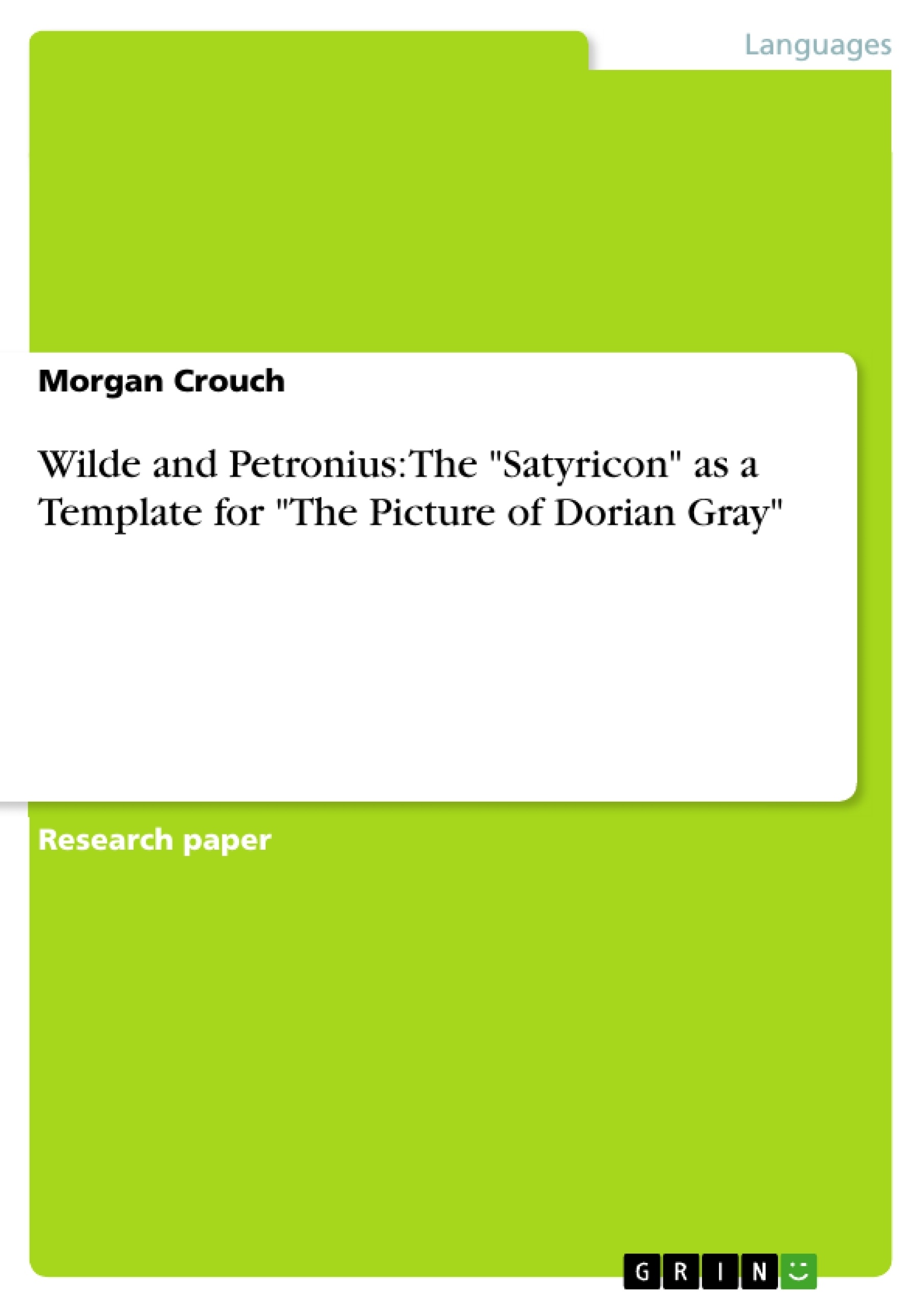It is no secret that the prominent aesthete Oscar Wilde was familiar with the work of Petronius of Rome. In fact, it’s so far from a surreptitious topic that it remains undecided whether Wilde can be held responsible for a translation of Petronius’s The Satyricon. His familiarity becomes quite apparent as well when we see Petronius’s text specifically referenced within Wilde’s work, The Picture of Dorian Gray. Wilde’s texts were often thought to have subtle hints of homoeroticism while Petronius’ The Satyricon demonstrated time and time again the blatant and unmistakably Roman depictions of homoeroticism. Furthermore, Wilde’s texts were eventually condemned for their suggested homosexual connotations, while the homosexual events in The Satyricon were dismissed as standard. However, Wilde’s reference of Petronius goes well beyond a mere scholarly allusion to demonstrate his well-read nature.
Table of Contents
- Introduction
- Similarities in Plot
- Character Comparisons
- Giton and Dorian
- Encolpius and Basil
- Ascyltos and Lord Henry
- Conclusion (This section is excluded per instructions)
Objectives and Key Themes
The objective of this paper is to analyze the striking similarities between Oscar Wilde's The Picture of Dorian Gray and Petronius's The Satyricon, proposing that Wilde utilized the latter as a structural and thematic framework for his own novel. The analysis focuses on demonstrating how Wilde's work might be understood as a sophisticated reimagining of Petronius's themes within a different social and historical context.
- The use of homoeroticism as a masked theme.
- Parallel character relationships and functions within the narratives.
- The exploration of beauty, corruption, and temptation.
- The role of the artist and the observer in shaping the narrative.
- The potential influence of The Satyricon on Wilde's writing style and thematic choices.
Chapter Summaries
Introduction: This introductory section sets the stage for the comparative analysis of Wilde's The Picture of Dorian Gray and Petronius's The Satyricon. It establishes Wilde's familiarity with Petronius's work and highlights the controversial nature of homoerotic themes in both novels, suggesting a potential intentional connection. The introduction posits the central argument: that Wilde used The Satyricon as a template for structuring and developing his own narrative.
Similarities in Plot: This section delves into the core plot structures of both novels. It establishes parallels in the overarching narratives, showing how the central relationships and conflicts in The Picture of Dorian Gray mirror those in The Satyricon. The comparison emphasizes the shared themes of beauty, temptation, and the destructive consequences of desire. The section acts as a foundation for the subsequent character analysis, highlighting the key similarities that provide the basis for deeper exploration.
Character Comparisons: This chapter explores the striking similarities between key characters in both novels. It systematically compares Dorian Gray with Giton, Basil Hallward with Encolpius, and Lord Henry with Ascyltos, demonstrating how these characters function in parallel roles within their respective narratives. The analysis highlights the shared characteristics and motivations of these characters, emphasizing their roles in driving the central conflict and exploring the consequences of their actions. It unpacks how each character contributes to the overarching themes of beauty, corruption, and temptation, connecting their individual stories to the broader narrative.
Keywords
Oscar Wilde, Petronius, The Picture of Dorian Gray, The Satyricon, homoeroticism, beauty, temptation, corruption, character comparison, literary influence, narrative structure, classical allusions.
Frequently Asked Questions: A Comparative Analysis of The Picture of Dorian Gray and The Satyricon
What is the main objective of this paper?
The primary objective is to analyze the significant similarities between Oscar Wilde's The Picture of Dorian Gray and Petronius's The Satyricon. The paper argues that Wilde used The Satyricon as a structural and thematic framework for his novel, reimagining its themes within a different social and historical context.
What are the key themes explored in the comparison?
The analysis focuses on several key themes present in both works, including the masked theme of homoeroticism, parallel character relationships and their functions, the exploration of beauty, corruption, and temptation, the role of the artist and observer in shaping the narrative, and the potential influence of The Satyricon on Wilde's writing style and thematic choices.
How are the plots of The Picture of Dorian Gray and The Satyricon compared?
The paper examines the core plot structures of both novels, identifying parallels in their overarching narratives. It shows how central relationships and conflicts in Wilde's novel mirror those in Petronius's work, emphasizing shared themes of beauty, temptation, and the destructive consequences of desire. This comparison lays the groundwork for the subsequent character analysis.
Which characters are compared and how?
The analysis systematically compares key characters: Dorian Gray with Giton, Basil Hallward with Encolpius, and Lord Henry with Ascyltos. The comparison highlights shared characteristics and motivations, emphasizing their roles in driving the central conflict and exploring the consequences of their actions within the broader narrative of beauty, corruption, and temptation.
What is the structure of the comparative analysis?
The analysis is structured as follows: an introduction setting the stage; a section on plot similarities; a detailed character comparison; and a conclusion (excluded from this preview). The introduction establishes Wilde's familiarity with Petronius's work and highlights the controversial homoerotic themes in both novels.
What are the key words associated with this comparative analysis?
Key words include: Oscar Wilde, Petronius, The Picture of Dorian Gray, The Satyricon, homoeroticism, beauty, temptation, corruption, character comparison, literary influence, narrative structure, and classical allusions.
What is included in the Table of Contents?
The table of contents includes: an introduction, a section on similarities in plot, a section on character comparisons (with sub-sections for specific character pairings: Giton and Dorian, Encolpius and Basil, Ascyltos and Lord Henry), and a conclusion (excluded from this preview).
- Quote paper
- Morgan Crouch (Author), 2010, Wilde and Petronius: The "Satyricon" as a Template for "The Picture of Dorian Gray", Munich, GRIN Verlag, https://www.grin.com/document/162240




